Energy – A Historical Perspective and Transition
Learning Objectives – By the end of this section, you should be able to to the following.
- Explain three ways our modern life has been made possible by the use of plentiful, affordable energy.
- Identify historical and modern sources of energy.
- List two times in history when we have transitioned to a new energy source.
- List 4 products made from fossil fuels.
- Contrast the average energy of a human with the energy we consume.
- Explain how our use of energy is related to climate change.
- Explain two possible benefits of transitioning from carbon based fuels to renewable and non-carbon-based fuels.
Note to the Reader
This chapter on energy is a work in progress.
When you find a correction or have a suggestion, please share with the author.
__________________________________________
Our study of energy will look at 1) conventional or non-renewable energy sources and 2) renewable energy sources, storage and conservation.
There are many reasons to study energy in a geology class. Three of the primary reasons are…
1. Our Use of Energy – Most of us would not be alive without consuming vast quantities of energy,
2. Consequences of Our Energy Use – Our use of energy is the primary driver of climate change.
3. The Energy Transition – Cause for Hope – Transitioning to cleaner forms of energy will lead to a variety of benefits.
Our Use of Energy
We have always used energy in some form. In our early days, we would burn wood or animal dung – biomass. In the graph below, you can see that until ~1850, most of the world’s energy came from biomass. However, our modern civilization simply would not exist without using a lot of energy, ~20X what the world used in 1800, though our population has grown ~6X.
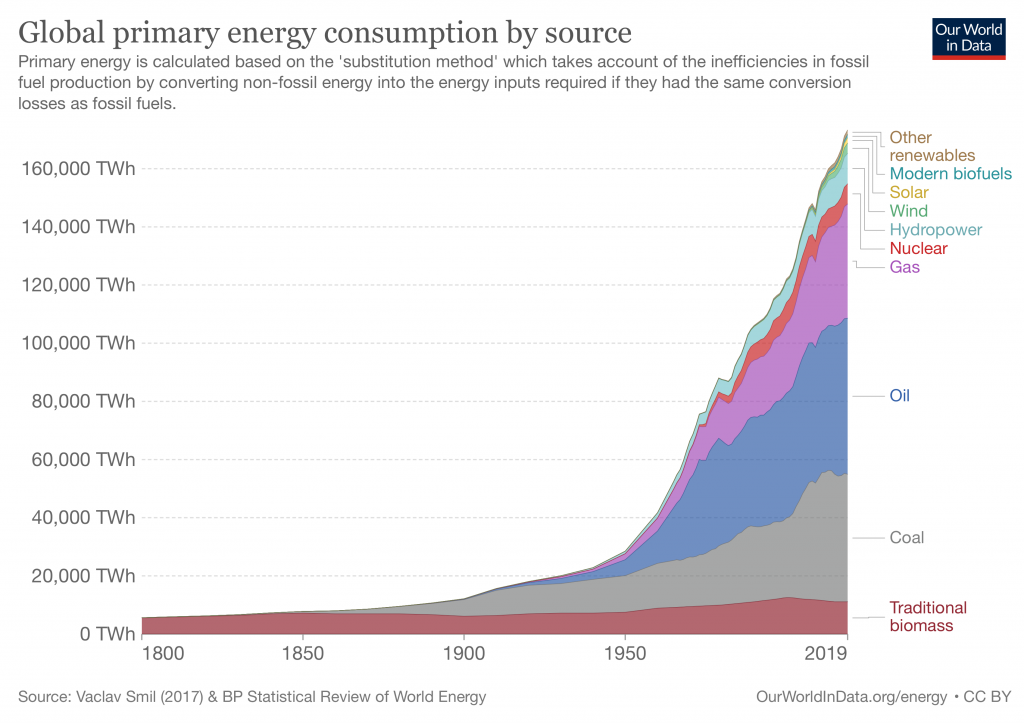
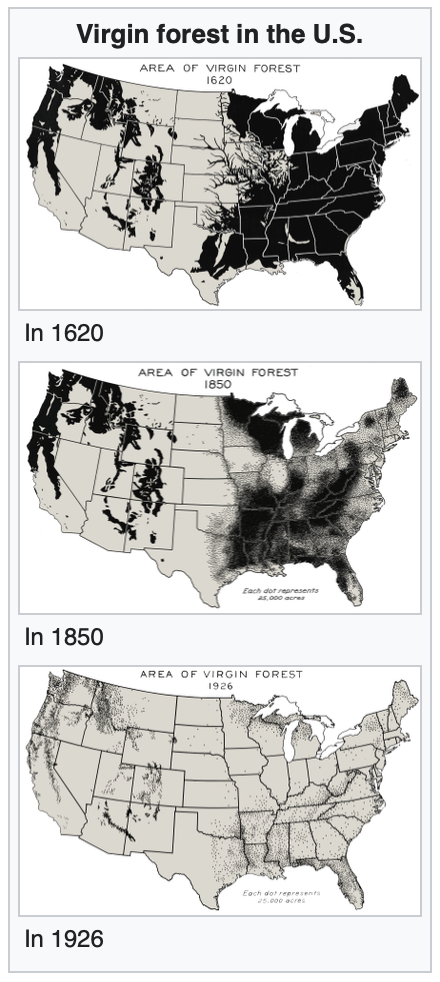
However, with a growing population and industrial sector, even the once richly-forested eastern United States was losing much of its forest as shown in the figure to the right. Those forests had been cut down for building and fuel.
With easily-obtained wood becoming more scarce and trees growing slowly, a new source of energy was needed. A transition was needed.
This source was coal. Coal was not a new source of energy. Civilizations around the world (below) had used coal for centuries, but its use became much more widespread in the mid-19th century.

Forests have an advantage over coal. In time, when the soil is maintained, forests can regrow. Coal can’t. But, coal has an important advantage over wood. Each kilogram of coal contains 2-6X the energy of wood. (Link) For each heating task, only ½ to 1/6 the fuel was required. The growing United States began to mine and burn a lot of coal.
This was an early energy transition – moving from wood or biofuels to coal – a stored form of biofuel. This transition took time and required some adaptation.
Another transition was in lighting. People once burned whale oil for lighting, but as we came close to exterminating many of the whale populations around the world, whale oil became expensive. Replacements were found, but eventually petroleum (oil) and its products began to be used.
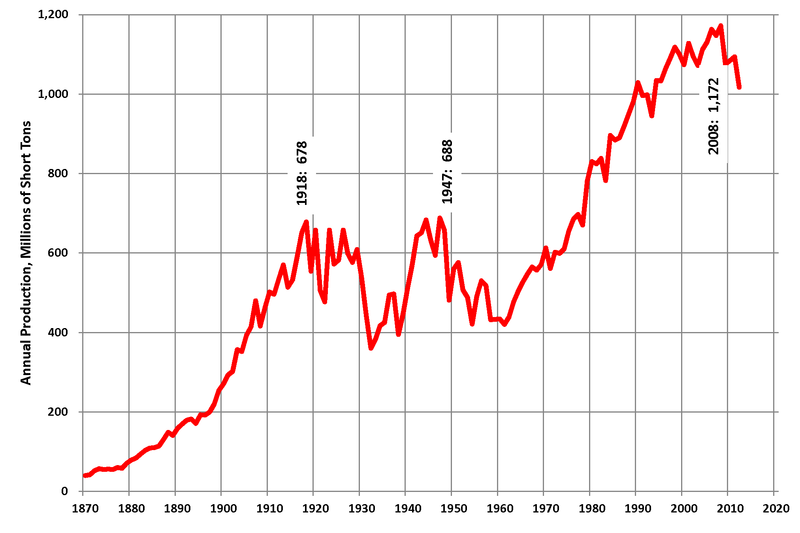
The energy from coal allowed the production of electricity and the pumping of water. With this ability to pump water, populations could live farther inland and away from rivers and lakes. Previously marginal farmland now could be utilized by sinking deeper wells to use stored groundwater. The electricity from coal allowed the creation of pumped sewage systems. Our population began to grow.
By the early part of the 20th century, another transition was underway. Coal was being challenged by petroleum. Then, in a few decades (Fig 10.1), methane would be a competitor.
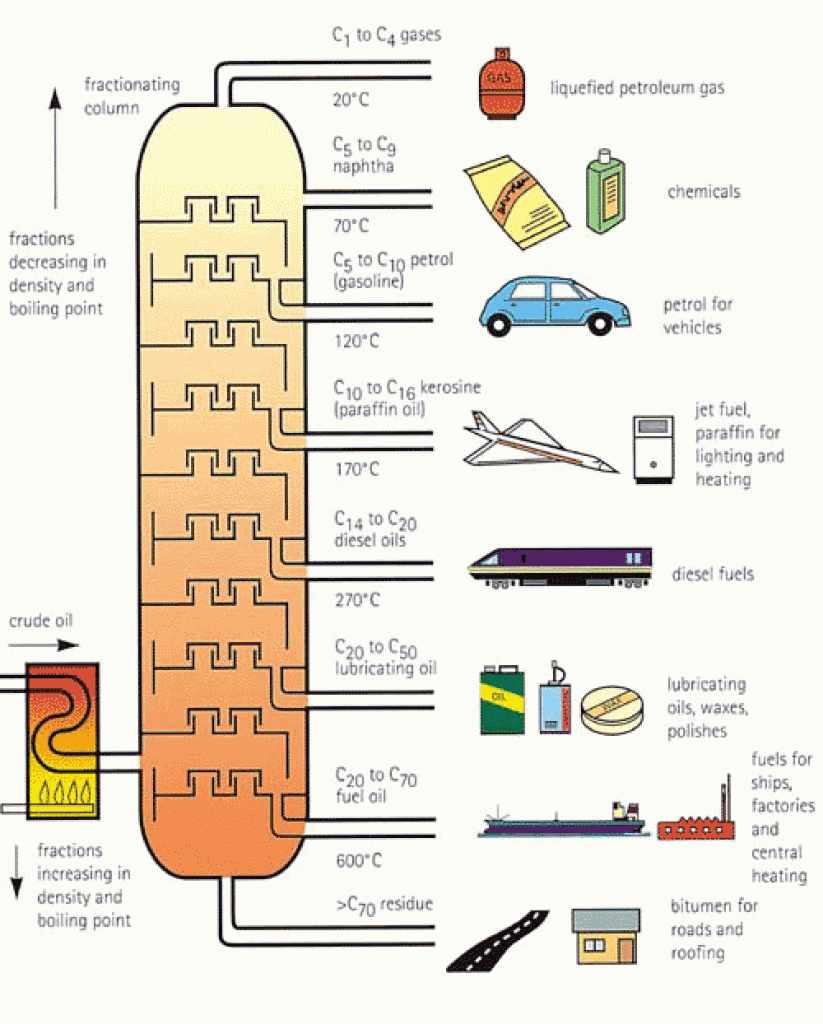
While fossil fuels are important as fuels, we also make materials from fossil fuels. Through the refining process, oil and natural gas can be reformulated into much of what we use each day – roads, plastics, paints, cosmetics, pharmaceuticals, and mineral oils as well as fuels.
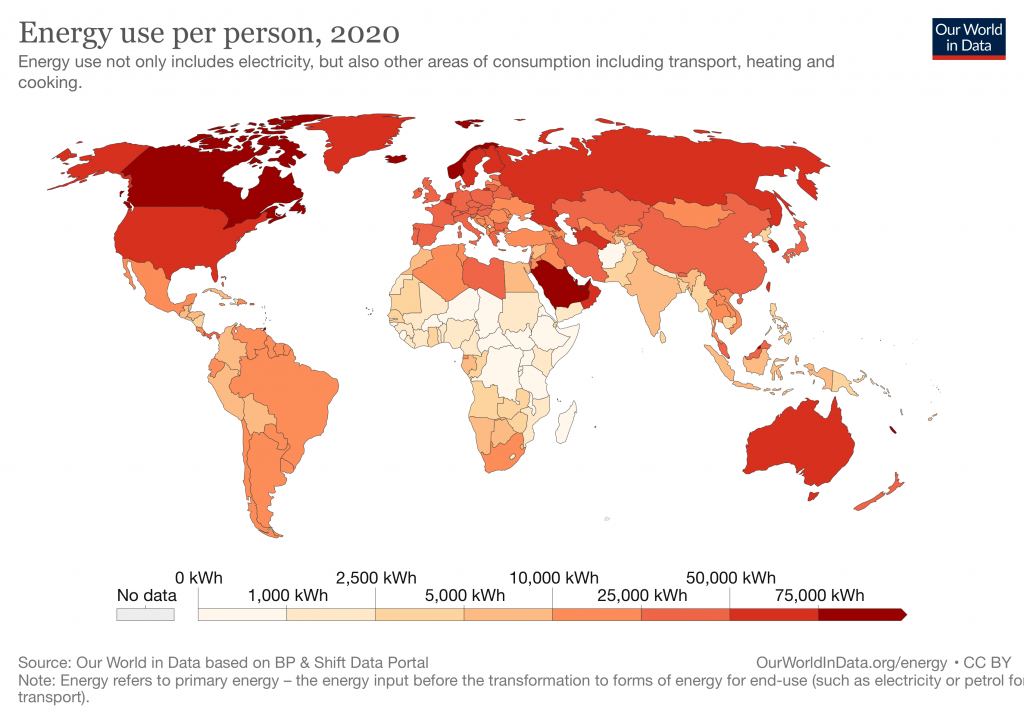
The average American uses 50,000 kWh/year. Is this a lot? How does this compare with what you could produce? A human going about daily life averages ~80 watts. (Link) In a 24-hour day, a person will produce 1920 watt-hours or 1.92 kWh (.080 kW x 24 hr). In a year, a human could produce ~700 kWh, only 1.4% of our total energy use. The rest of the energy we use comes from the sources listed in Fig 10.1.
We have made energy so easy to get and so affordable that we don’t appreciate how much we use or the consequences of that use. Could you power your entire house – your HVAC (heating, ventilation and air conditioning), water heater, lights, electronic gizmos and more by pedaling a bicycle connected to a generator? By pedaling a bicycle could you generate enough electricity to heat the water for one shower? Watch the video below.
Video 10.1 – Human Power Show. To see another example of our inability to produce the energy we use, watch this olympic cyclists try to toast bread. (3:14)
Consequences of Our Energy Use
Our use of energy – primarily in the form of fossil fuels – has released into Earth’s atmosphere carbon that had been locked in Earth’s crust for up to 400,000,000 years. A good portion of what the world had stored over 400,000,000 years has been burned by us in 200 years. This burning of stored carbon is increasing carbon dioxide in our atmosphere.
We know that carbon dioxide is a greenhouse gas as show in this simple experiment below.
Video 10.2 – The Greenhouse Gas Demo (Source)
We have known about the greenhouse effect for well over a century. In 1897, Svante Arrhenius theorized that burning coal could modify the atmosphere.
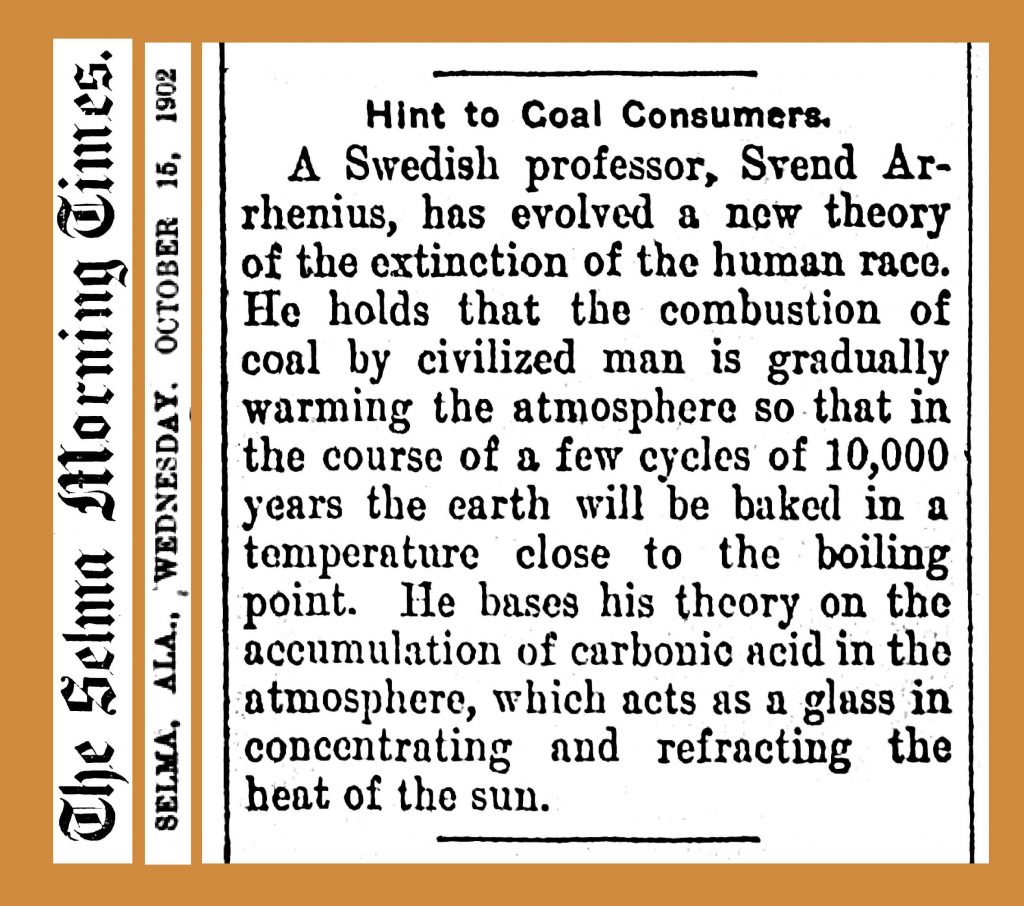
We know that the increasing carbon in our atmosphere is from the burning of fossil fuels and not volcanoes as we can look at the type or isotope of carbon that is increasing. That isotope shows that the carbon is from very old carbon stores – the fossil fuels we are burning. In addition, with the rise of carbon (in the form of carbon dioxide or CO2) the amount of atmospheric oxygen is decreasing.
In less than 300 years, with the beginning of the industrial revolution in 1760, we have released a good portion of the carbon that Earth had sequestered over hundreds of millions of years. The burning of fossil fuels has already changed, is changing, and will continue to change for at least the next century, Earth’s climate and, with it, all life on land or in the oceans.
The Energy Transition – Cause for Hope
A transition from fossil-fuel based energy to renewable or non-carbon forms of energy is the most critical challenge ever faced by humanity. This transition also is a great wealth-creation opportunity… unless you are a fossil fuel company that chooses not to adapt and to ignore the warnings of Svante Arrhenius. This is not an exaggeration. As early as 1958, even scientists working for the fossil fuel companies warned of the consequences of continued carbon releases. 1
Not only were those reports kept quiet, some of the fossil fuel companies began to spread disinformation and tried to cast doubt, saying, “The science isn’t settled yet.” 2
In Figure 10.1 above there is a tiny and growing wedge of energy sources that don’t release carbon – renewable energy and nuclear. The growth of this wedge concerns the fossil fuel companies, but the growth of that wedge should excite everyone who wants cleaner air and water, healthier children, more affordable energy, and a more equitable society. Millions of people around the world already are refueling their electric vehicles from solar panels on their roof. They don’t need a navy to patrol the oceans in the “national (oil) interest.” They keep more money in the local economy. They are keeping the air, soil and water, just a bit cleaner. And this trendworries the traditional and powerful fossil fuel companies.
Our world is facing a number of issues including access to clean water, ample food, a clean environment, increasing poverty and inequality, terrorism & war, disease, education, democracy, and population growth. Affordable, clean energy can address all of these challenges as pointed out by Nobel Prize winning scientist Dr. Richard Smalley in his Top Ten Problems of Humanity for Next 50 Years.
The energy transition is here. It will be like changing from wood/dung to coal. The lumberjacks and dung collectors will say, “That will never work! It will be too difficult.”
This will be a transition like coal giving way to natural gas. There will be challenges. But there also will be benefits such as cleaner air, reduced international competition (war) over limited resources, a healthier population, a better economy, and a more sustainable environment.
To summarize..
1) The way we have used energy is why we have our modern society.
2) The way we have used energy also is why Earth and all life is facing the gradual yet existential crisis of climate change.
3) We can transition in time to more sustainable forms of energy. That transition will benefit all of us.

